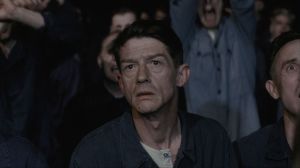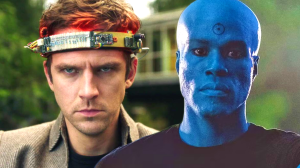Marvel Comics has always had a presence in the tabletop market, but now Fantasy Flight Games, creators of titles like Android Netrunner, Star Wars X-Wing, Game of Thrones’ Living Card Game, and more, is ready to put their own unique spin on the Marvel Universe, and the result is Marvel Champions. The game is a co-operative experience that puts you in control of some of your favorite heroes as you try to put a stop to a villain’s scheme, and you’ll use an array of strategy, abilities, and allies to get the job done. Thankfully we can say that Fantasy Flight succeeds in delivering a fast-paced game with creative and layered mechanics that don’t feel like anything else on the market, and we’re here to give you the full rundown.
Videos by ComicBook.com
When you speak of card games in the Marvel universe, it’s hard not to think of games like Legendary, which have ruled the Marvel card game roost for quite some time. It was therefore important for Fantasy Flight to distinguish itself from that popular game and offer up enough differences to justify its existence in the market, and a big part of that is in how it utilizes the heroes themselves and allies.
Champions has you picking one hero to play as, and the starter set offers up five heroes to choose from, including Black Panther, Captain Marvel, Spider-Man, She-Hulk, and Iron Man. After you pick one of those heroes you not only get their abilities but also a Nemesis deck, an Obligation card, and a double-sided Identity card. That one is the most important to your failure or success, as one side has your hero identity and the other side has your human alter ego, and the side that is turned during any given turn will dictate what the villains do on their turn.

For example, if you have Captain Marvel’s hero side up, you can utilize cards in your deck with the Hero Action keyword on it, and the villain will come after you and attack during their turn. That keeps them from progressing the main scheme and ultimately keeps them from winning the game by hitting the number of Threat listed on the Scheme. If you’re on your Alter-Ego side, the enemy will focus on their scheme, and in doing so will not attack you or your allies, which is important if you’re trying to heal yourself or remove some Threat from a Scheme. This back and forth, all while managing the enemy as well as your own health and abilities, forms the crux of the game and offers up plenty of moment-to-moment decision-making that always kept me invested.
That gameplay gets another interesting wrinkle in the forms of a Nemesis and an Obligation card. Each hero has an Obligation card that is mixed in with the Villain’s encounter deck, and it needs to be resolved immediately once it surfaces. Each hero also has a nemesis, and certain cards in the Villain’s deck will trigger it. For example, Captain Marvel has Yon-Rogg as her nemesis, and, once triggered, you’ll introduce the Nemesis into the game and they will be engaged with your hero directly, giving you two main enemies and another gatherer of Threat to worry about and distract you from the main Villain and Scheme.

Enemies will also have minions that come up throughout the deck, or, if you’re Ultron, you’ll have a multitude of easily conquered but annoying Drones to deal with. That’s why it is imperative that you utilize your own Allies that pop up as you make your way through your deck, and each one will have some handy abilities that it’s up to you to maximize. Just like your hero, Allies have an Attack stat and a Thwart stat, which you use to remove Threat from the Scheme, but sometimes you’ll want to utilize the Allies’ other abilities to get the most out of them. For example, Hawkeye’s Ally card has several Attack Counters placed on it, which will give a free Response Attack every time a minion enters the game. Sure, you could use his regular Thwart and Attack moves as well, but each time an Ally uses those basic attacks, they will also take some damage, so you’ll need to evaluate which ability is most useful and cater your strategy accordingly.
The initial five heroes each offer a unique mix of abilities and skills, and that will only get more complex once you start customizing decks. That said, the biggest negative out of the box is the selection of villains, which is just a little underwhelming. The starter box comes with Rhino, Ultron, and Klaw, and while there are plenty of other notable characters in the Villain’s Encounter deck as well as the Nemesis deck, it would have been nice to have another marquee boss Villain to fight against. That’s a small nitpick though, and all three Villain decks are challenging in their own ways.

Villain selection aside, Marvel Champions offers up a creative spin on the Living Card Game genre that really takes advantage of its ties to the Marvel Universe. Each hero’s approach changes up the gameplay in a satisfying way that feels authentic to the character, and while it might take you a few rounds to get into the flow, once you do, you’ll be moving at a quickened but steady pace, with the game becoming increasingly more fun the more players you have at the table. If you’re looking for a perfect way to play as your favorite Marvel heroes on the tabletop, you cannot go wrong with Marvel Champions.
Rating: 5 out of 5
Published by Asmodee
Developed by Fantasy Flight Games








